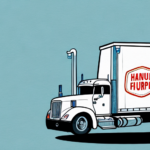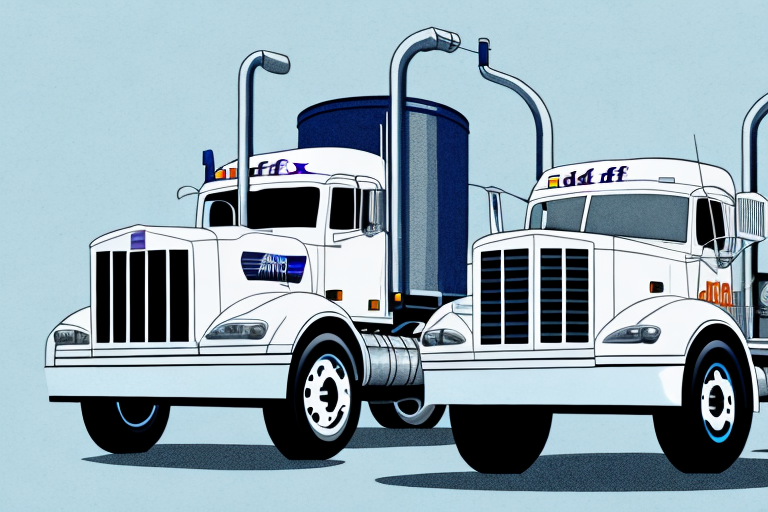What to Expect from UPS Rates in 2023
As we navigate through 2023, business owners and consumers alike are keenly observing the trends in UPS rates. This article delves into the factors influencing UPS rates, historical patterns, predictions for the current year, the impact of fuel prices, and strategic tips for optimizing shipping costs.
Understanding How UPS Rates are Determined
UPS rates are calculated based on several key factors:
- Package Weight and Dimensions: Heavier and larger packages incur higher shipping costs.
- Distance: The longer the distance between the origin and destination, the higher the rate.
- Service Type: Options include ground, air, and international services, each varying in cost.
- Declared Value: Higher declared values increase shipping costs but offer additional insurance.
- Shipping Volume: Businesses shipping in large volumes may qualify for discounts.
Additionally, UPS provides discounts for frequent shippers and those utilizing their online shipping tools, enhancing cost-effectiveness for businesses.
Key Factors Affecting UPS Rates
Fuel Prices
Fluctuations in fuel prices significantly impact UPS rates. Rising fuel costs often lead to increased shipping rates to offset operational expenses.
Labor and Operating Costs
Increases in labor wages and other operating expenses also contribute to rate adjustments. UPS continually evaluates these costs to maintain service quality.
Package Distance and Size
Longer distances and larger packages demand more resources, resulting in higher shipping costs. Efficient packing and choosing appropriate shipping distances can mitigate these expenses.
Market Demand
High demand for shipping services can drive rate changes. During peak seasons, rates may increase to manage the elevated shipping volumes.
Historical Trends in UPS Rates
Over the past few years, UPS rates have experienced fluctuations influenced by various market dynamics:
- Fuel Price Increases: Persistent rises in fuel costs have consistently pushed UPS rates upward.
- Growth of E-Commerce: The surge in online shopping has heightened demand for shipping services, necessitating rate adjustments.
- Regulatory Changes: Environmental regulations have led to increased operational costs, contributing to higher shipping rates.
Understanding these historical trends provides valuable context for predicting future rate movements.
Predictions for UPS Rates in 2023
Based on current market conditions, several factors suggest that UPS rates will continue to rise in 2023:
- Rising Fuel Costs: Continued volatility in fuel prices is likely to drive further rate increases.
- Inflation: General inflationary pressures may lead to higher operational costs for UPS.
- Technological Investments: UPS's investments in new technologies to enhance efficiency may be reflected in shipping rates.
Businesses are advised to anticipate these changes and strategically plan their shipping budgets accordingly.
The Impact of Fuel Prices on UPS Rates
Fuel constitutes a significant portion of UPS's operational expenses. Consequently, fluctuations in fuel prices directly influence shipping rates:
- Price Increases: When fuel prices rise, UPS often passes these costs onto customers through higher shipping rates.
- Price Stabilization: Conversely, stable or decreasing fuel prices can mitigate rate hikes.
Businesses should monitor fuel price trends and adjust their shipping strategies to manage costs effectively.
Strategies to Save Money on UPS Shipping in 2023
Consolidate Shipments
Combining multiple packages into a single shipment can reduce overall shipping costs by minimizing per-package fees.
Negotiate Rates
Businesses with significant shipping volumes can negotiate better rates with UPS representatives, leveraging their shipping frequency for discounts.
Optimize Packaging
Using appropriately sized packaging reduces weight and dimensions, leading to lower shipping costs. Efficient packaging also minimizes the risk of damage during transit.
Utilize UPS Discounts and Promotions
UPS offers various discounts for frequent shippers and those using specific services. Staying informed about these promotions can lead to substantial savings.
Compare with Other Carriers
Evaluating services and rates from competitors like FedEx and USPS ensures that businesses are leveraging the most cost-effective shipping solutions.
Comparative Analysis: UPS vs. Competitors
Service Offerings
UPS competes with FedEx and USPS by offering a comprehensive range of services, including ground, air, and international shipping options. Each carrier has unique strengths that cater to different business needs.
Network Accessibility
UPS boasts an extensive network with over 5,000 stores and authorized shipping outlets nationwide, providing convenient drop-off and pick-up points for customers.
Sustainability Initiatives
UPS leads in sustainability efforts by investing in alternative fuel vehicles, optimizing delivery routes, and utilizing eco-friendly packaging. These initiatives not only reduce environmental impact but also appeal to environmentally conscious customers.
Negotiating Better Rates with UPS
Businesses can explore several avenues to negotiate more favorable shipping rates with UPS:
- Leverage Shipping Volume: Higher shipping volumes provide leverage for negotiating discounts.
- Long-Term Contracts: Committing to long-term shipping agreements can result in reduced rates.
- Explore Service Bundles: Combining multiple services may offer cost savings.
Engaging directly with UPS representatives and clearly communicating shipping needs can facilitate better rate negotiations.
Pros and Cons of Using UPS for Shipping in 2023
Advantages
- Reliability: UPS is renowned for its dependable delivery services.
- Comprehensive Service Options: A wide array of shipping services caters to diverse business requirements.
- Extensive Network: Nationwide accessibility enhances convenience for businesses and customers.
- Sustainability Efforts: Commitment to eco-friendly practices appeals to environmentally conscious consumers.
Disadvantages
- Higher Costs: Premium services may come with higher price tags.
- Complex Rate Structures: Navigating UPS's various rate options can be challenging for some businesses.
- Potential Delays: While generally reliable, unexpected delays can impact delivery timelines.
Tips for Reducing Your Shipping Costs with UPS
- Consolidate Shipments: Grouping multiple orders can lower shipping expenses.
- Optimize Packaging: Efficient packaging minimizes weight and dimensions, reducing costs.
- Leverage Technology: Utilize UPS's online tools and shipping software to streamline processes and identify cost-saving opportunities.
- Regular Rate Reviews: Periodically assess shipping rates and services to ensure optimal cost-effectiveness.
- Stay Informed: Keep abreast of UPS promotions, discounts, and policy changes to take advantage of savings.
Common Mistakes to Avoid When Using UPS for Shipping
- Choosing the Wrong Service: Selecting an inappropriate shipping option can lead to unnecessary costs and delays.
- Inaccurate Weight and Dimension Estimates: Misestimating package size and weight can result in unexpected fees.
- Neglecting Tracking: Failing to monitor shipments increases the risk of lost or delayed packages.
- Ignoring Packaging Best Practices: Poor packaging can lead to damage, increasing costs and customer dissatisfaction.
By avoiding these common pitfalls, businesses can enhance their shipping efficiency and cost-effectiveness.
The Role of Technology in the Shipping Industry and Its Effect on UPS Rates
Technological advancements are revolutionizing the shipping industry, with significant implications for UPS rates:
- Automation: Automated sorting and handling systems improve efficiency, potentially reducing operational costs.
- Data Analytics: Leveraging data helps UPS optimize delivery routes, minimizing fuel consumption and costs.
- Tracking Systems: Enhanced tracking technologies improve shipment visibility, reducing losses and delays.
- Sustainable Technologies: Investments in green technologies align with regulatory requirements and consumer expectations, influencing rate structures.
Embracing technology enables UPS to streamline operations, which can translate to more competitive shipping rates for customers.
Case Studies: Adapting to Changes in UPS Rates
Small Retailer Success
A small online retailer consolidated shipments and optimized packaging, resulting in a 15% reduction in shipping costs despite rising UPS rates.
Mid-Sized Business Strategy
A mid-sized company negotiated bulk shipping rates with UPS and leveraged technology to automate shipping processes, achieving significant cost savings and improved efficiency.
E-Commerce Giant's Approach
An e-commerce giant implemented route optimization software and invested in sustainable packaging, which not only reduced shipping expenses but also enhanced their brand's environmental reputation.
These case studies illustrate how businesses can strategically respond to rising UPS rates through thoughtful planning and innovation.




















